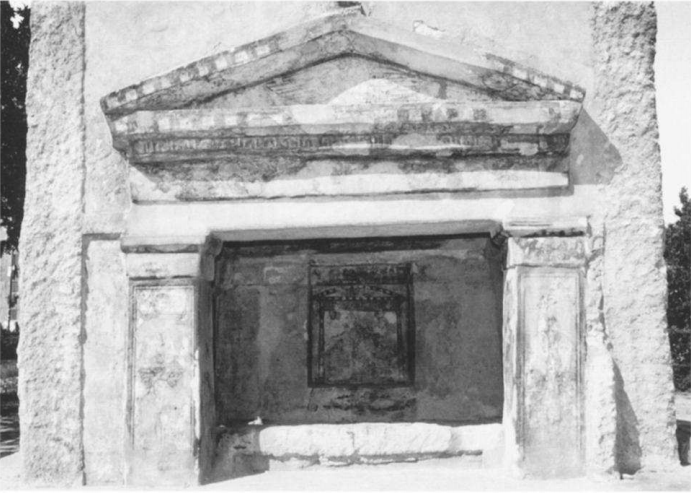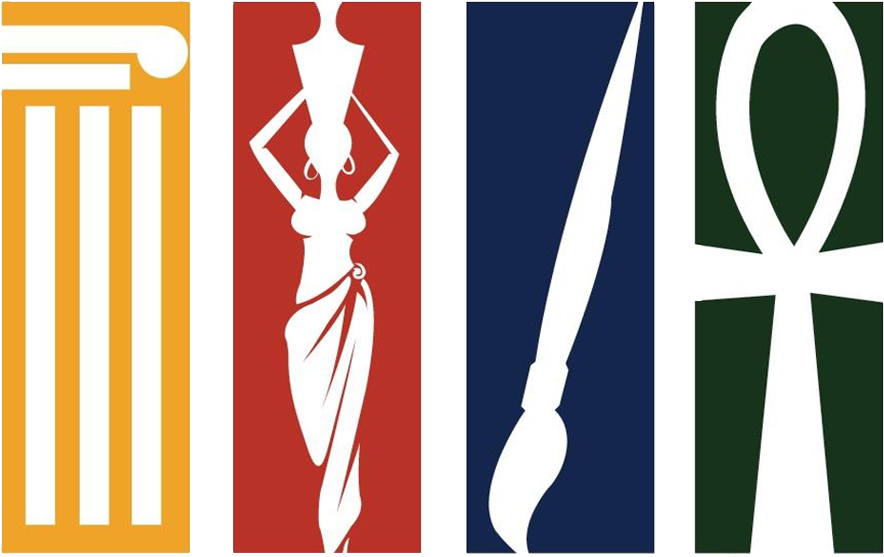The Stagni Tomb
Explore and examine the details of Stagni tomb in 3D
Catacombs of Kom El Shoqafa
Among all the Alexandrian cemeteries, the Catacombs of Kom El-Shoqafa is considered as one of the most remarkable Greek Roman cemeteries, which consist of all the elements that characterize Alexandrian cemeteries of this type, namely: a staircase, an open courtyard and a postrace, all located on one axis. Further, the remains of this cemetery indicate that it was originally built to bury one person, then it was used to bury several people in holes engraved in the walls which were distorting the original decoration of the cemetery. The site was then used to display various tombs discovered from numerous sites. The first tomb was documented in the project of VRAHA is Stagni Tomb;
The Stagni Tomb
The Stagni Tomb was exposed in May 1989 in a complex of three monumental cemeteries during the construction of a warehouse on a land that was once owned by an Italian merchant, Alfredo Stagni di Giovanni, in the port region dominated by timber repositories just west of Gabbari, called Ward-ian¹.
The Stagni Hypogea was built during the Ptolemaic period, and then it was reused and expanded during the Roman period². The painted Stagni tomb was cut from the adjoining rock and removed to the archaeological park above the catacombs at Kom el-Shoqafa, where it is now on view. The painted tomb from the Stagni Hypogeum incorporates generic Roman and Egyptian elements as well as general Greek elements, particularly Ptolemaic ones, through its architectural and artistic scheme.³
Description of the Stagni Tomb

1. The Architectural Façade and Its Decoration
Its facade has piers that are topped with anta capitals and take the shape of a Greek naos. The piers are supported by a triangular tympanum framed by deep cornices, and part of these cornices are now missing
2. The Pediment
The pediment is unusually low for a monument of Roman date, and the deep and heavy cornices that frame the tympanum appear to compress the triangular space even further. e. On the white wall of the tympanum, a winged sun disc with a horizontal wing is painted in a black outline with yellow and reserved details.
3. The Frieze and Its Decoration
The deep cornice that crowns the frieze has myrtle leaves painted in red on its underside and a scallop pattern in red, black, and white on its face. The bottom surfaces of all the cornices Painted on the frieze is a motif well-known in Alexandrian context: confronted sphinxes (one pair partially preserved at either end of the entablature). The sphinxes have yellow chests, heads, and legs, and a bluish hue for their wings. Those paintings are currently missing.
4. The Piers and Its Decoration
On the exterior face of each pier, a panel drawn with doubled lines encloses an image of a petal-winged boy, undoubtedly an Eros, treated as a figure decorating the shaft of a candelabra. On the lateral faces of the piers, Anubis stands garbed as a Roman soldier, and on each face of the pier capitals are a pair of Horus falcons. Those paintings are currently missing.
5. The Interior of The Tomb
The interior of the tomb niche is ca. 2.05 m long, ca. 1.23 m wide, and 1.17 m high (from the lip of the sarcophagus and including the cornice) at the back wall.
The back wall of the tomb contains an Egyptian naos enclosing a female deity flanked by two sphinxes that crouch on high cubic bases. This niche and its painting remain the most remarkable elements of the Stagni Tomb. The small, shallow, figured niche itself is rare among Alexandrian tombs.
In Collaboration with

References
-
Venit, M. S. (1999). The Stagni Painted Tomb: Cultural Interchange and Gender Differentiation in Roman Alexandria. American Journal of Archaeology, 103(4), 641–669. https://doi.org/10.2307/507076
-
محمد. (1992). مقبرة الورديان او ما يطلق عليها مقبرة ستانجى. الآثار اليونانية الرومانية (pp. 147–174). الحضرى للطباعه.
-
سليمان, م. ع. ا. ا., & محمد عبد الفتاح السيد. (1995). مقبرة الورديان بالاسکندرية رؤية جديدة لتأريخ الصور الجدارية. Bulletin of the Center Papyrological Studies, 12(1), 287-305.

